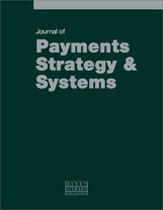Combinatorial innovation: Unpacking the genius of India’s Unified Payments Interface
Abstract
This paper examines combinatorial innovation, positing that significant technological and societal advancements frequently stem from the novel recombination of existing components, ideas and technologies rather than radical invention. Using India’s Unified Payments Interface (UPI) as a case study, it dissects how the National Payments Corporation of India created a globally impactful, transformative digital payment ecosystem through the strategic integration of existing elements, including real-time fund transfer mechanisms, application programming interface standards, third-party payment initiation models and QR code technology. The paper highlights UPI’s role as quintessential digital public infrastructure, illustrating how robust public infrastructure can be rapidly and cost-effectively assembled and deployed through combinatorial innovation. By analysing UPI’s rapid adoption, massive scale and profound impact on financial inclusion and merchant acceptance, this paper demonstrates how combinatorial innovation can lead to groundbreaking solutions without having to create new building blocks. Furthermore, UPI exemplifies reverse innovation: a solution developed for an emerging market that is now inspiring developed economies. The paper discusses the implications of this approach for fostering innovation and identifies an existing gap in network-level interoperability within the QR code ecosystem, presenting a missed opportunity for even greater resilience and competitiveness. This article is also included in the Business and Management Collection which can be accessed at http://hstalks/business.
The full article is available to subscribers to the journal.
Author's Biography
Balakrishnan Mahadevan is a postdoctoral research fellow at the Indian Institute of Management’s Centre for Digital Public Goods. He has played key roles in the digital transformation of payments in India, notably as Chief Operating Officer of the National Payments Corporation of India, where he oversaw the development of innovations such as IMPS (the platform underlying UPI and the Instant Payment System), Aadhaar-enabled payments, the National Automated Clearing House and the RuPay domestic card scheme. Dr Mahadevan has also worked with the World Bank, advising developing countries on strengthening financial infrastructure and digital payment ecosystems. With more than three decades of experience gained at leading banks and major institutions, he brings deep expertise at the nexus of policy, technology and institutional design. Dr Mahadevan holds an MBA in finance, a master’s in political science and public administration, a master’s in bank management and a PhD in finance and payments. He has written numerous articles for national and international journals and serves on the editorial boards of two leading journals focused on payments and banking. His research interests include payments, particularly fast and instant payments, as well as digital public infrastructure.
R. Srinivasan is Professor of Strategy and Chairperson of the Center for Digital Public Goods at the Indian Institute of Management Bangalore. His areas of research and teaching include digital public goods and digital public infrastructure, protocols and open networks, and platform business models. He has written many articles for international journals in addition to books on strategy and platform businesses and engages with both industry and government on consulting and policy assignments.
